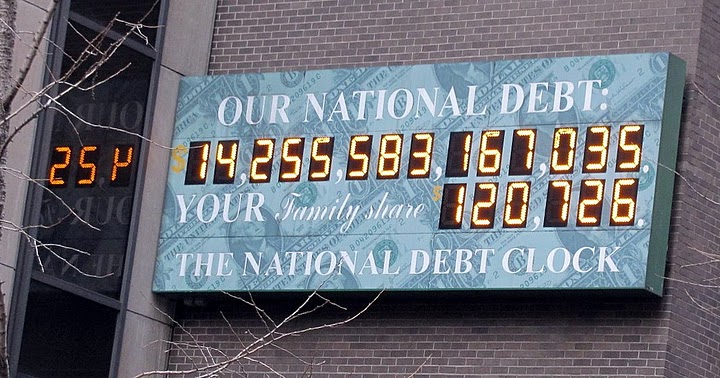One thing about the debt-ceiling debate that completely threw the chattering classes was the victory (however temporary) for opponents of tax increases. Every previous “bipartisan” deficit reduction plan, save one, since 1982 included a hefty tax increase – and the execption (the 1997 deal) involved a Democrat in the White House who had rammed a massive tax hike through a friendly Congress in 1993.
There was, however, one major difference between all of those deals and this one: the academic environment. If that sounds strange (and I know it does), just keep reading.
Behind the various political back-and-forth on political economics was the overarching Keynesian consensus – confirmed in no uncertain terms by Richard Nixon, who famously declared himself a Keynesian in 1971. Keynesian economics was a mathematical construct that essentially favored government spending over tax reductions, tax increases over spending cuts, paper money (and lots of it) over hard money, and in general, more intervention over less intervention. It was also the unquestioned dominant school of thinking in academia in the 1960s, and in politics once Nixon signed up in 1971.
Clearly, some folks still cling to the spirit of ’71, such as the folks behind the new Better Choices in Virginia crew, an amalgam of left-of-center groups who are calling on Virginia to raise taxes should a shortfall occur during the next budget cycle. Here’s Michael Cassidy’s take on things (WaPo):
If Virginia chooses to close this future budget shortfall with a cuts-only approach, it will impede our economic recovery and cost jobs in both the public and private sectors. We need to preserve what works in Virginia and get the state back on course.
If you bend your ear, you can even hear George Harrison’s “My Sweet Lord” in the background. However – as much as I hate to break it to Cassidy – it hasn’t been 1971 for a long time.
Keynesian economics started losing the professors almost as soon as it conquered the Republicans. Nixon hadn’t even left office before Thomas J. Sargent began building the Rational Expectations Theory. By the end of the ’70s, Keynesianism was fighting RET and Monetarism in the academic world and supply-siders in the political world. As the latter shifted from an economic argument about Aggregate Supply to a political one about the financial effect of tax cuts, it slowly lost steam, while in academia, “New Keynesianism” joined the battle.
Through it all, however, Keynesians’ greatest argument – the one that still trumped its rivals – was the idea that government spending was “multiplied” throughout the economy (Keynesians themselves call the effect “the mutliplier”). So long as that multiplier was left unchallenged, politicians in both parties gravitated towards more spending and away from low taxes. This was the case throughout the 1980’s, 1990’s, and even the aughts. Arguments against tax increases were largely political; arguments for them were financial; and most importantly, the government spending that caused the argument in the first place always seemed to occupy the high ground in economics.
That is, until 2009.
In what can only be described as an irony no literary artist would dare to conceive, economists began probing the real-world effect of the Keynesian multiplier just as the most ardent Keynesian president in 40 years assumed office. What they found eroded the basis for Obamanomics in a way no one could have guessed during the 2008 campaign.
In truth, anti-Keynesians always had trouble with the “multiplier.” The biggest problem they had with it was the fact the government spending (particularlky deficit spending) meant the feds were taking investment money awy from someone else. In other words, a project paid for via taxes or bonds takes away money that could have been invested in new or expanding businesses, thus negating any initial benefit to the economy. The effect of this “crowding out” of private investment was a raging debate between Keynesians and their opponents . . . until empirical examinations of the multiplier started coming in.
What they found was eye-opening. The OECD economists found crowding out to be so heavy that it drove the multiplier below 1. Stanford economist John Taylor found a similat multiplier-turned-divider (his was 0.5). Harvard economist Robert Barro determined through his research that the multiplier was effecitvely zero, i.e., government spending’s benefit to the economy was nonexistent.
Suddenly, the economic arguments behind Keynes’ theory – even to those who accepted the constructs behind it – were turned on their heads. If government spending had such a weak effect, then tax cuts were better, while raising taxes were worse than cutting spending. Sure enough, when the president initially unveiled the stimulus of 2009, several leading economists whacked it, including Taylor and Sargent themselves.
This is the new divide that was reflected during the debt debate. The Teabrewers are not crazy, out-of-touch loons; they are the political force behind the greatest economic challenge to Keynesianism that the old school has ever faced – but if you’ve kept yourself stuck in 1971, you wouldn’t know anything about it.
Thus the disconnect from Cassidy, Obama, MSM, and others. The ground has shifted beneath their feet, yet the don’t understand why they’re falling. All they need to do is look at a calendar.
Cross-posted to the right-wing liberal


